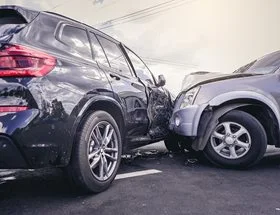Alcohol can impair your ability to drive, even in small amounts. If you plan to drink, it's best to not drive at all.
Drink driving and the law
Alcohol is a drug that affects the central nervous system and brain function. In Australia, it is against the law to drive while your Blood Alcohol Concentration (BAC) is 0.05 or above.
If your blood alcohol level is at 0.05, your risk of being in a crash is about double than if you had no alcohol in your system.1 The higher your BAC, the more likely you are to be involved in a serious crash. Learner and provisional drivers must have a zero BAC when driving.
Drink driving is enforced through targeted and random roadside breath testing by the WA Police Force.
Staying below 0.05 BAC
If you choose to drink alcohol, your blood alcohol level should remain below 0.05 if you:
- Drink no more than two standard drinks in the first hour and one per hour thereafter (for men of average size), or
- Drink no more than one standard drink per hour (for women of average size)
This information from WA Police is a guide only. You can still be above 0.05 BAC even if you follow this information. Keep in mind, alcoholic drinks served in pubs, bars and restaurants are often served in larger glasses and contain more than one standard drink.
Use our Standard Drink Tool to see how many standard drinks are in your typical pour.
What factors affect blood alcohol level?
Your BAC depends on many different factors that vary significantly from person to person.2
Women generally have a higher BAC. One reason for this is that alcohol exists mainly in body water, and women generally have less water in their bodies than men.
Different forms of the same gene can mean the body processes alcohol at different rates.
Body fat doesn’t absorb alcohol, meaning the alcohol is more concentrated in people with higher body fat.
Having food in the stomach slow down the rate at which alcohol passes into the blood stream. If you choose to drink alcohol, only do so during or after you've eaten.
An average, healthy body can only break down around one standard drink per hour. If you choose to drink alcohol, take your time!
Older people are more likely to have a higher BAC because they process alcohol slower and have less body water.
Medications can impact how your body breaks down alcohol. If you’re taking medication, talk to your doctor or pharmacist about if you can drink alcohol.
- The amount of alcohol you drink
- Strength of your drinks
- The length of time you drink
- Overall health
The legal driving limit is not a safe limit for health
No amount of alcohol is good for your health - the only way to prevent harm from alcohol is to not drink at all.
If you do drink, the Australian Alcohol Guideline recommends healthy men and women have no more than 10 standard drinks a week and no more than 4 standard drinks on any one day to reduce the risk of harm from alcohol-related disease or injury.
The less you drink, the lower your risk of harm.
Tips to stay safe
- Use a rideshare app or taxi
- Plan public transport options before you go out
- Have a designated driver
- Arrange to be picked up
- Don't accept a lift from someone who has been drinking
- Learn ways to reduce your drinking
Frequently Asked Questions
If you’re going to drink, make the decision not to drive. It’s always safer to separate drinking from driving.
If you’re meeting friends or family in situations where drinking alcohol is likely, you can stay safe by:
- Choosing a nominated driver who isn't drinking alcohol
- Travelling by public transport
- Using a rideshare app or calling a taxi
- Not accepting a lift from someone who has been drinking
- Western Australian Police Force. Drink and Drug Driving. 2021. Available from: https://www.police.wa.gov.au/Traffic/Offences/Drink-and-Drug-Driving
- Cederbaum AI. Alcohol metabolism. Clin Liver Dis. 2012. 16(4):667-85. doi: 10.1016/j.cld.2012.08.002.
Page last updated7 August 2023


